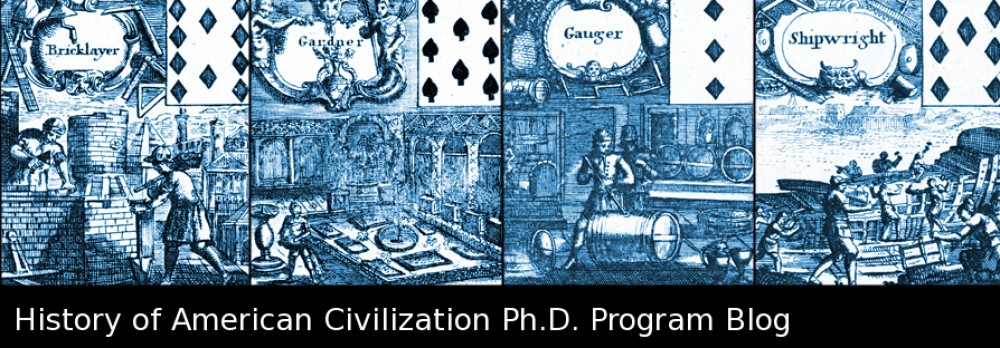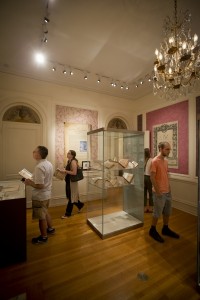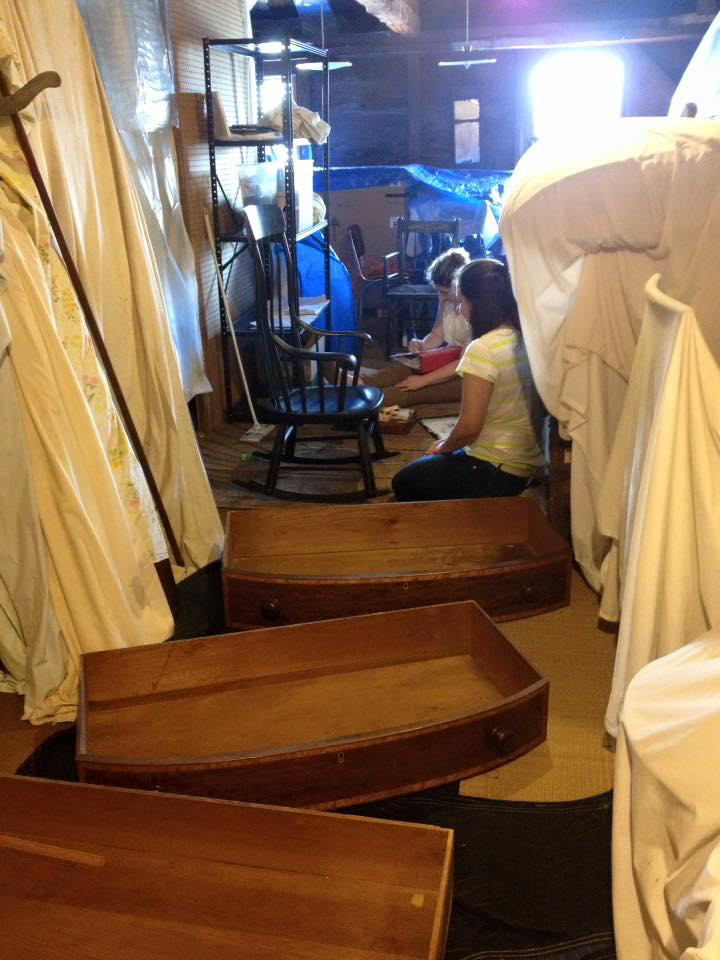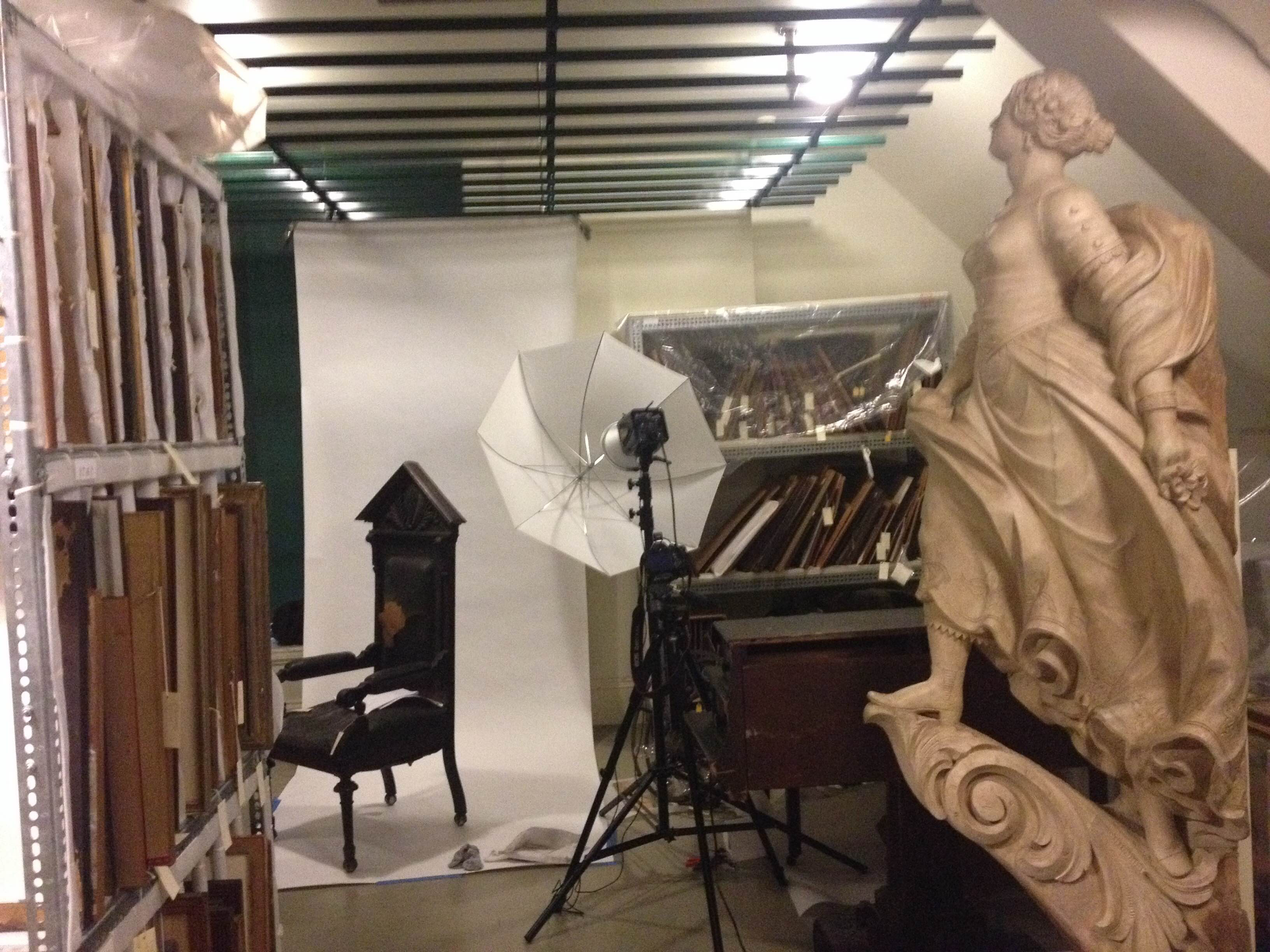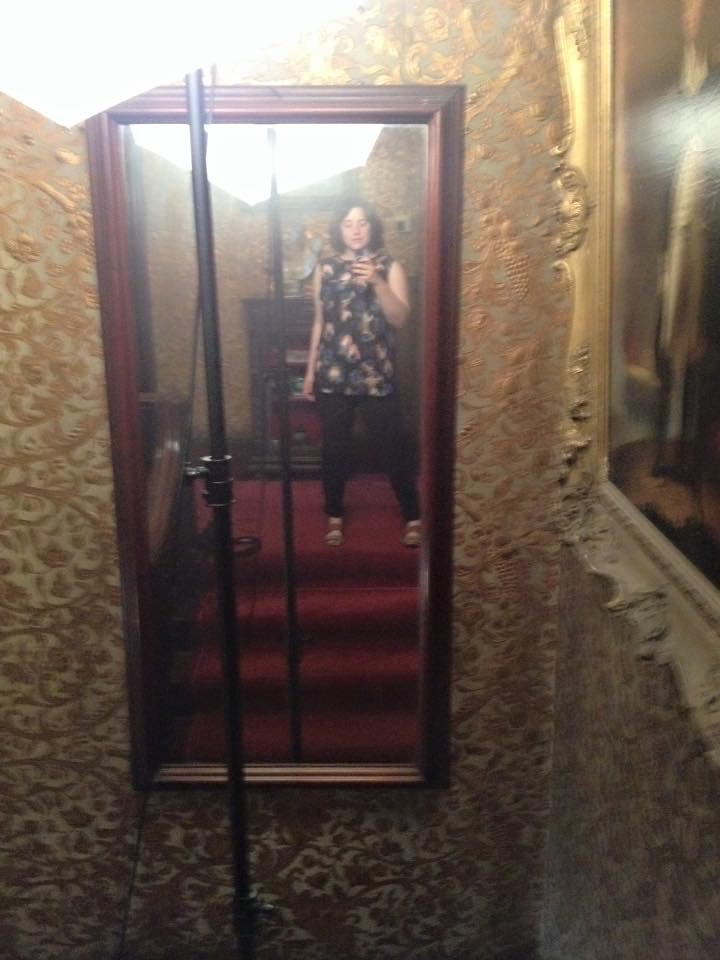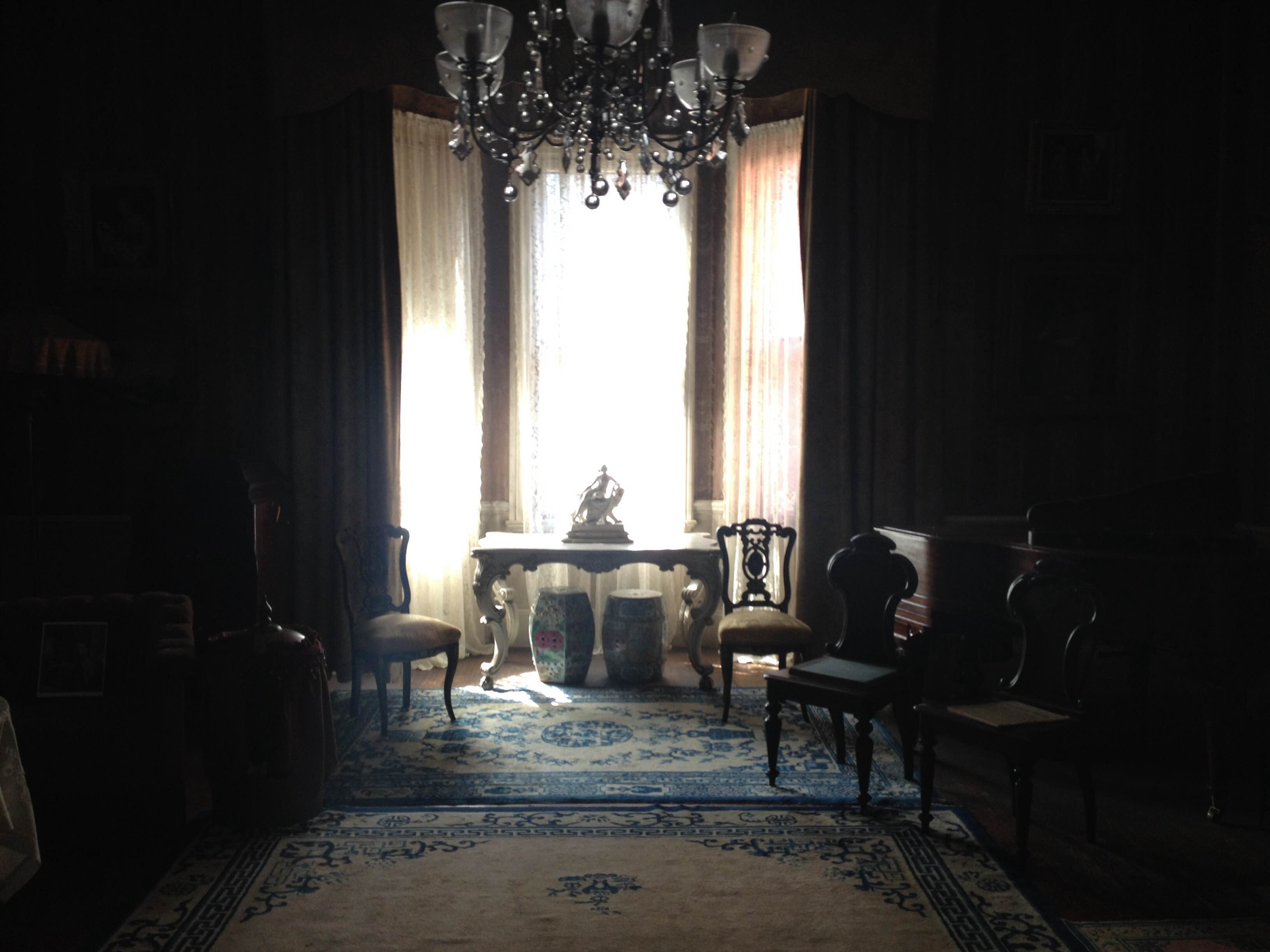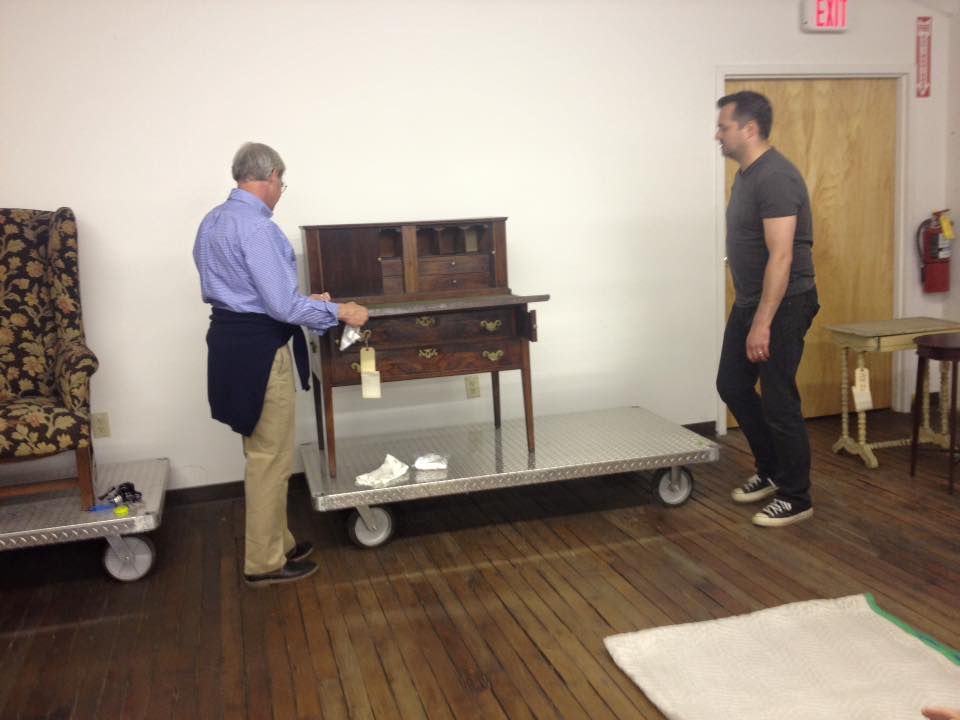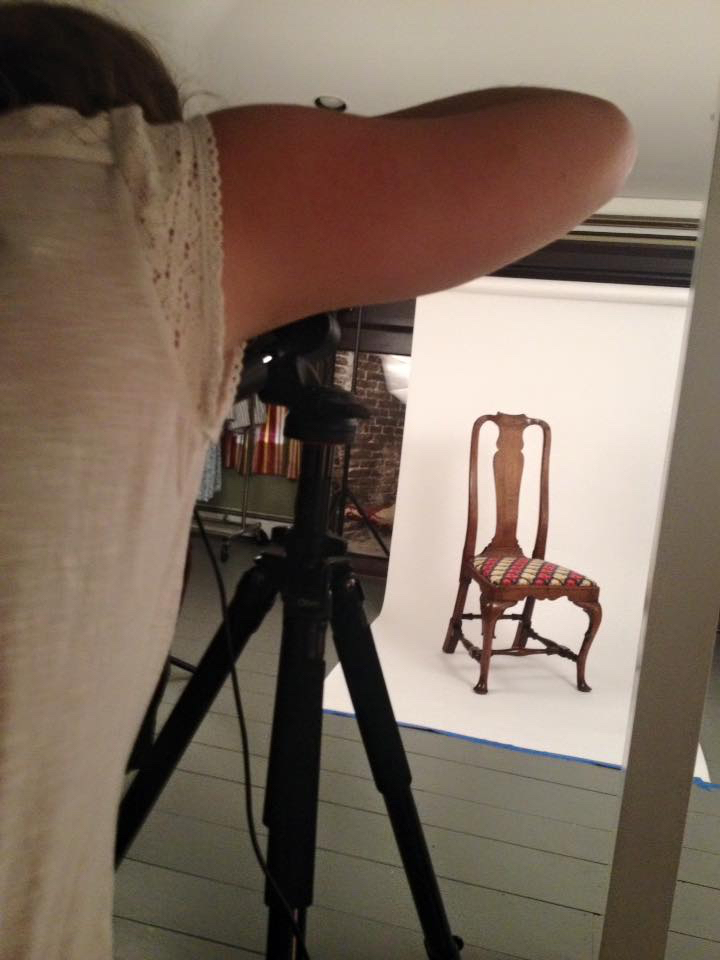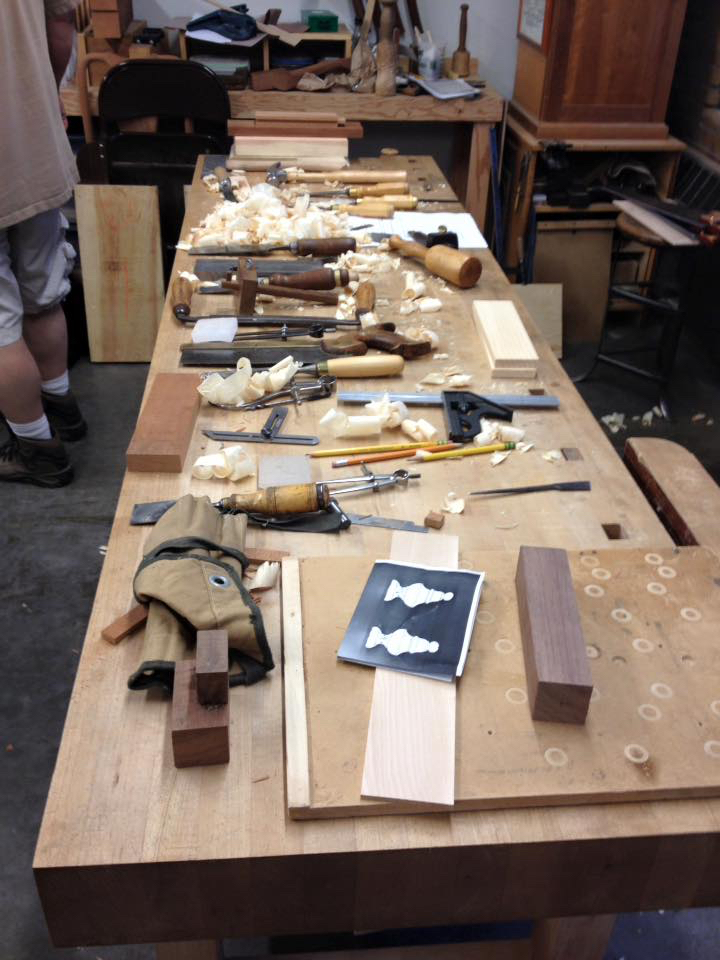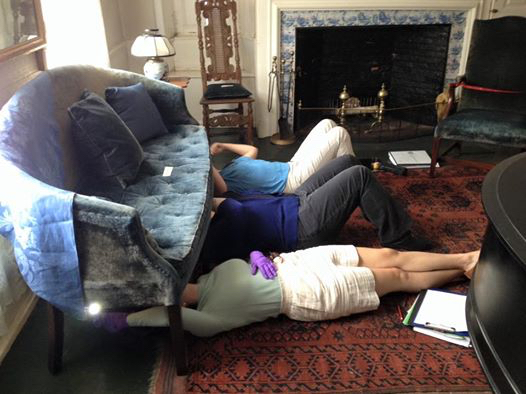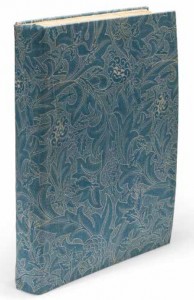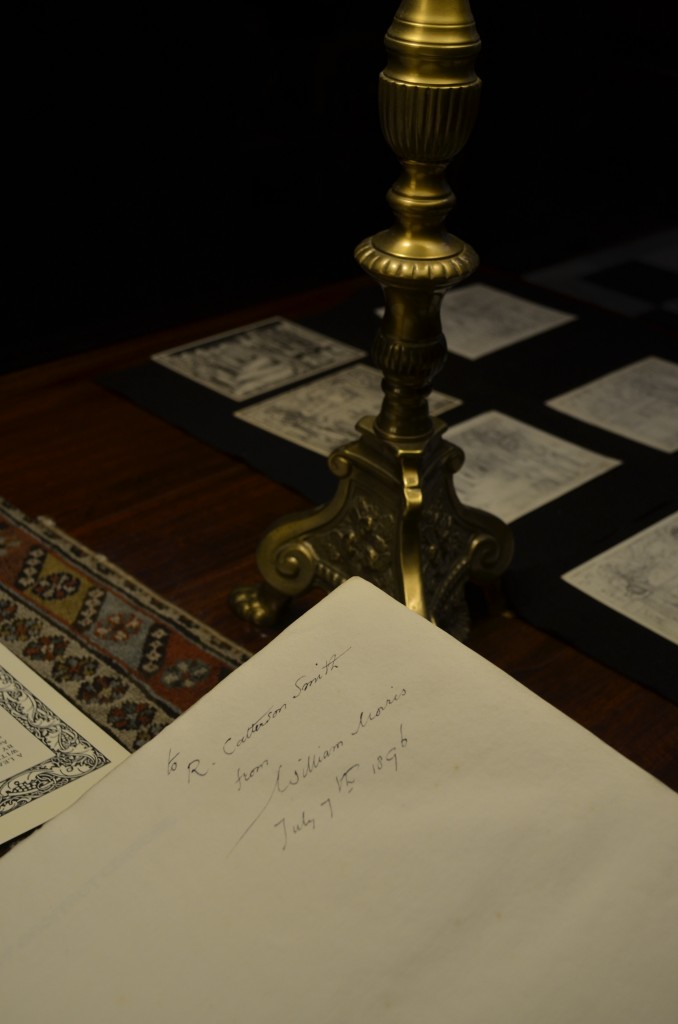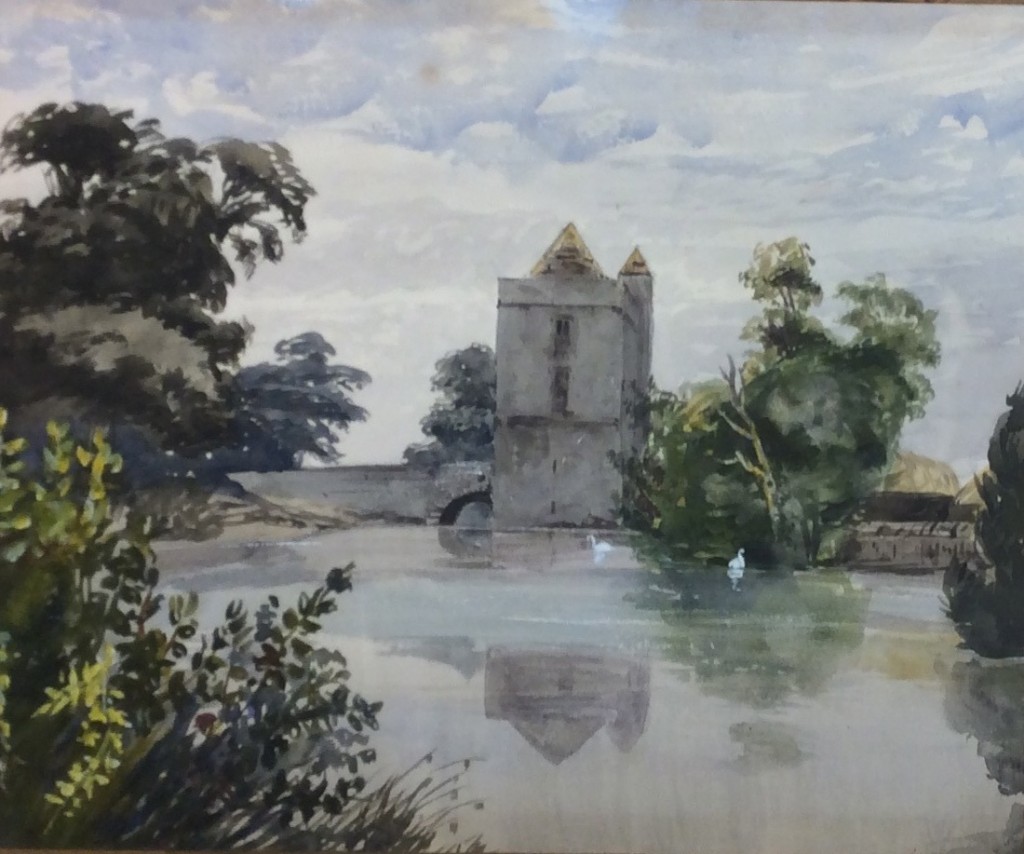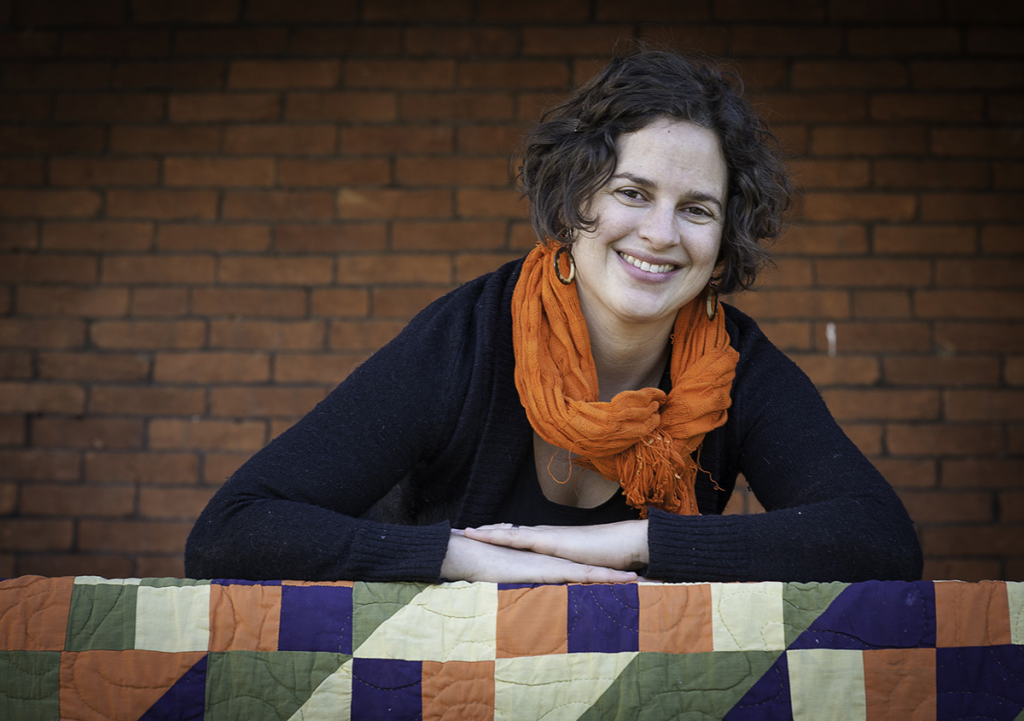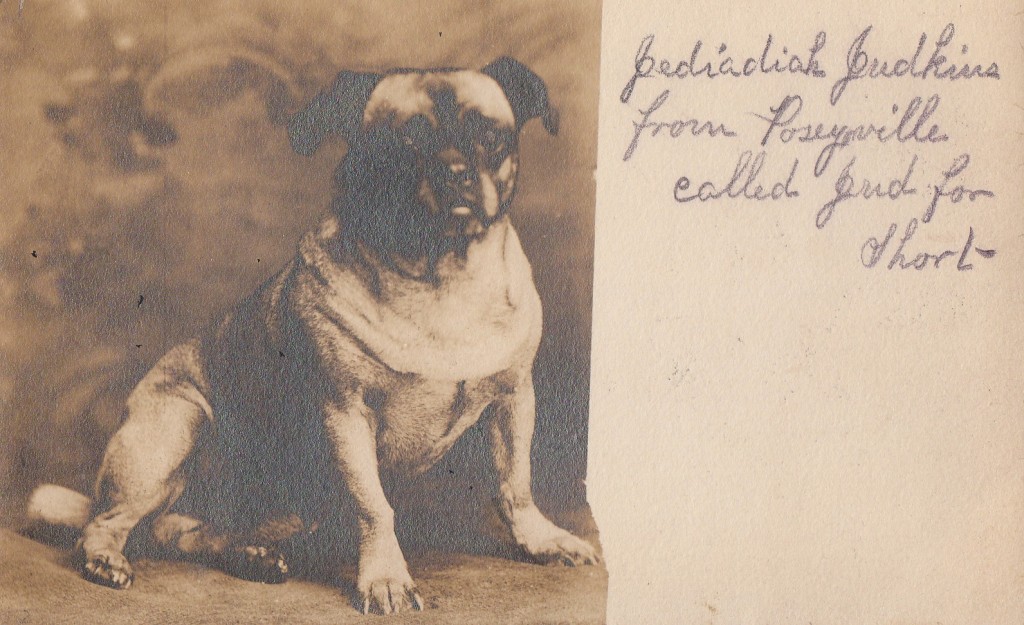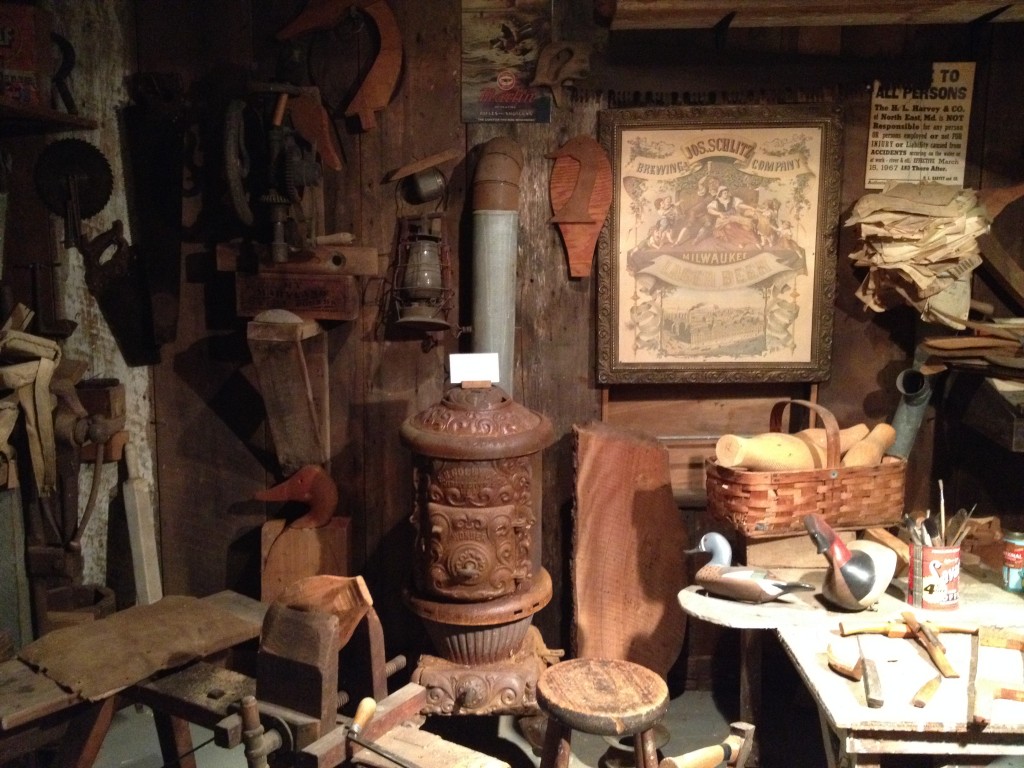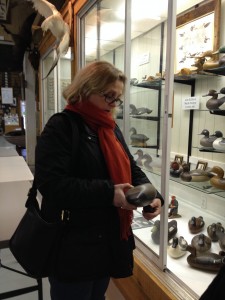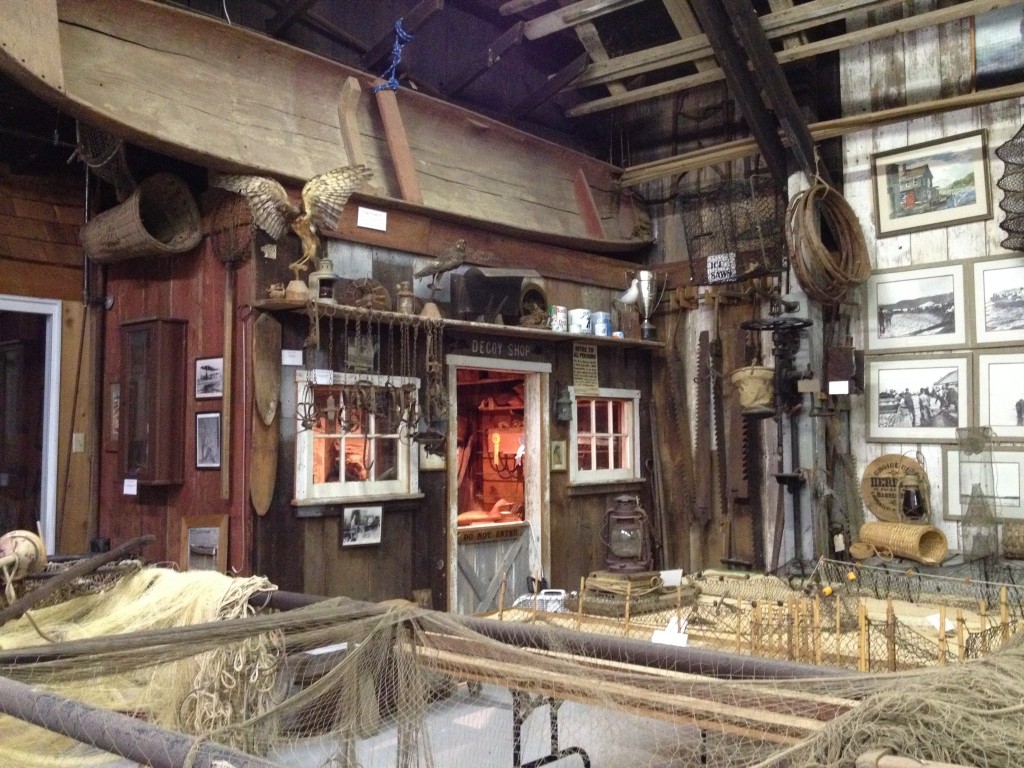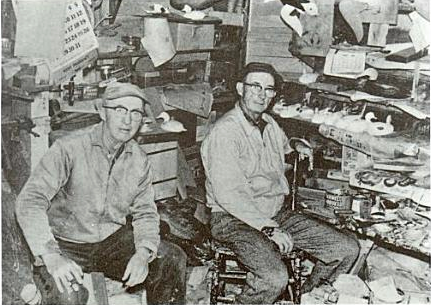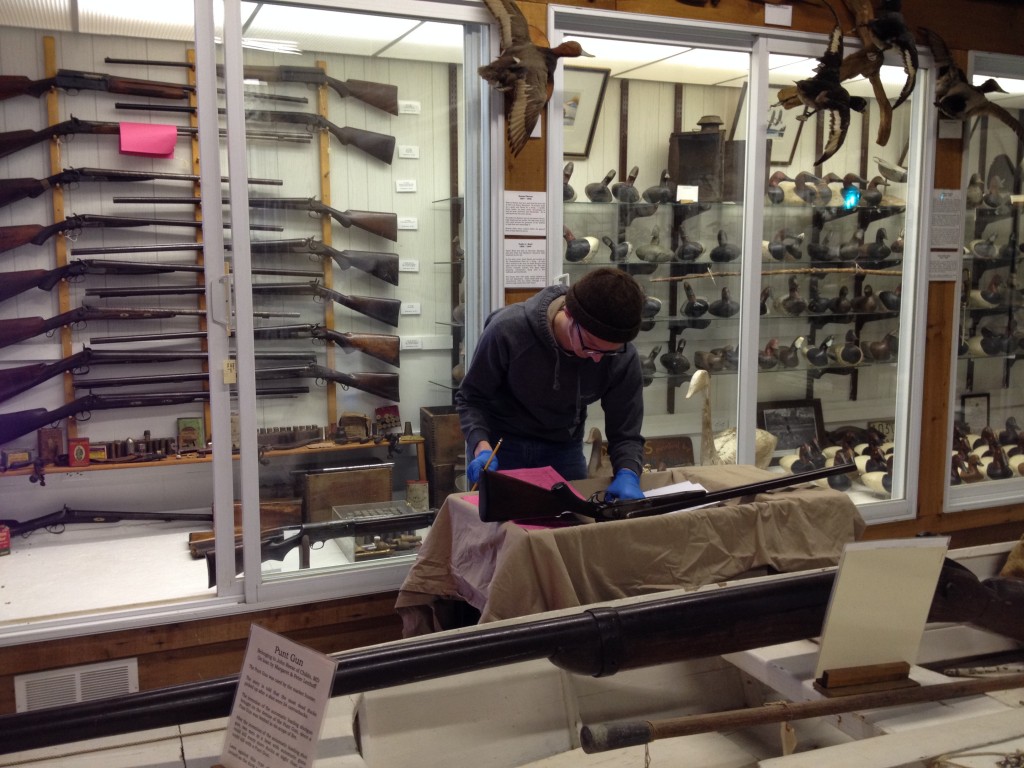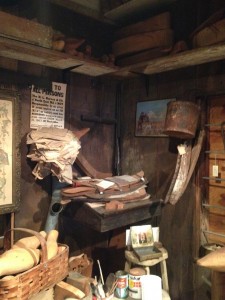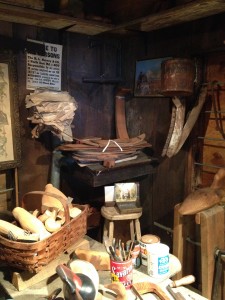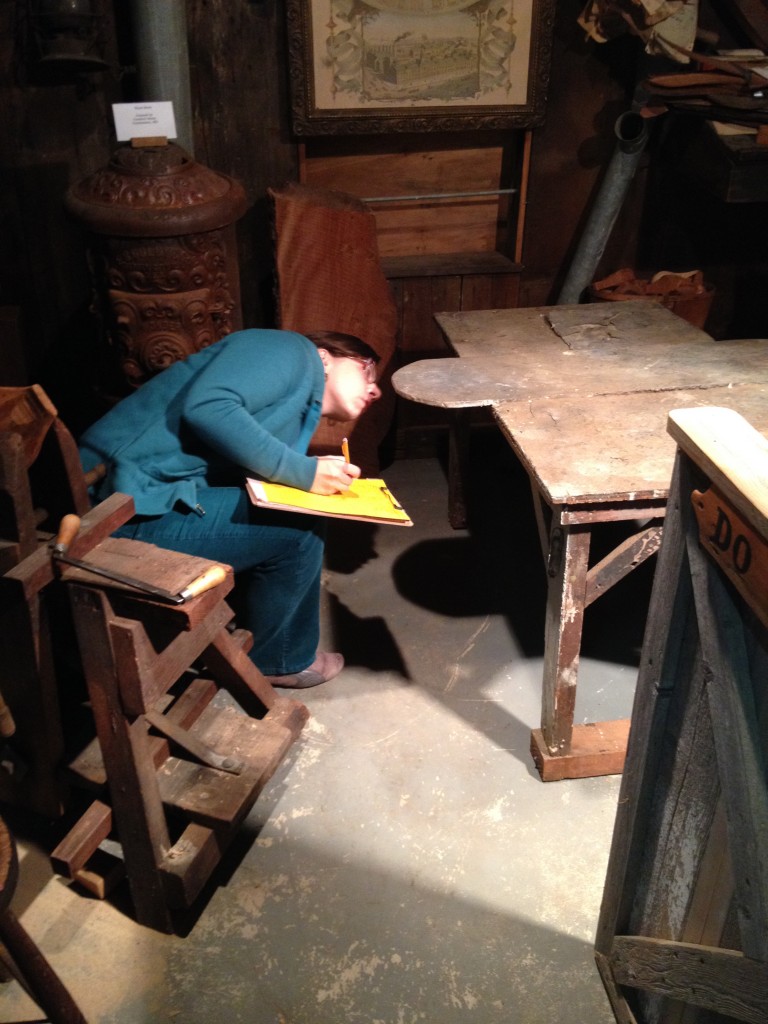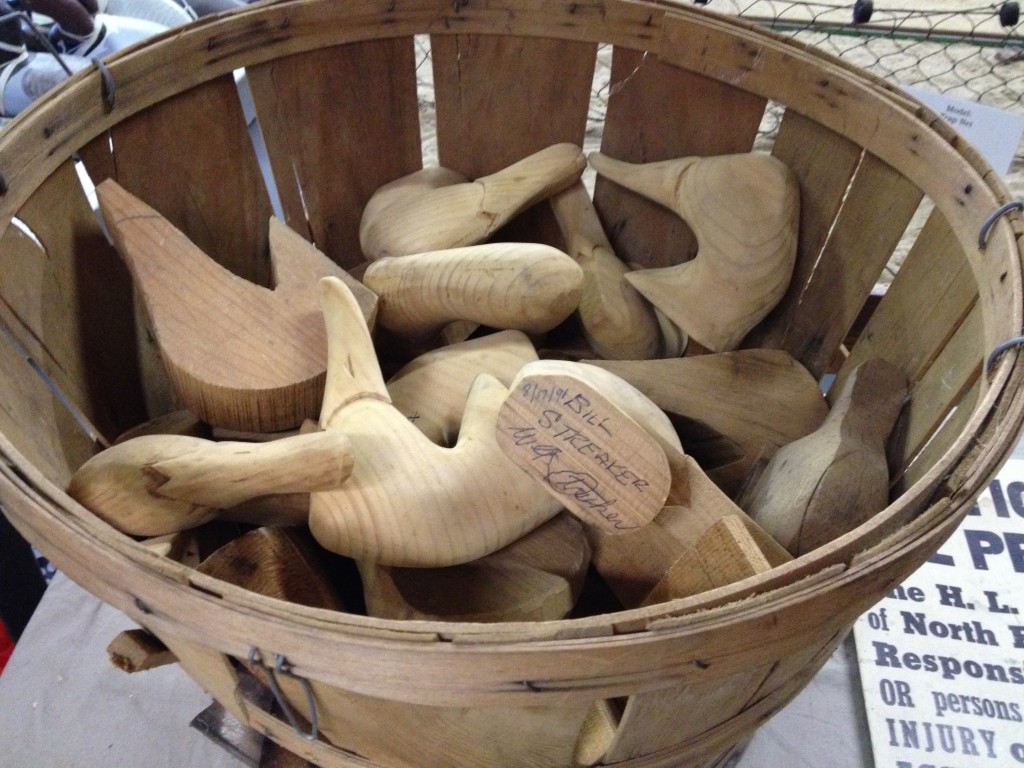As each of my fellow participants in the 2013 Delaware Public Humanities Institute (DelPHI) fellows program chose a folded slip of paper from the box passed around the table, my excitement mounted. Who would be my “pretend” audience for my upcoming five-minute presentation on my research? A group of kids? Retired professionals? Prospective museum donors? The possibilities were endless, but I was eager to accept the challenge. As the box of dwindling slips reached me, I dipped my hand into the pool, selected a strip of paper, and read it discreetly to myself.
“TED talk.”

This is a screen shot of the Ted web site. I combed the site for inspiration in preparation for my mini-Ted talk debut.
Shoot, I thought.
I had been musing just days before about how I needed to do some research on this guy Ted and his talks. Well, now I had a few days to figure this out to avoid making a fool of myself.
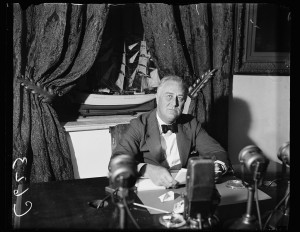
Presiden Franklin Roosevelt was known for his ability to captivate and reassure many Americans through his “Fireside Chats” delivered during times of national crisis. Great communicators are both born and made. DelPHI gave us the tools to work on the “making” part of that equation. Harris & Ewing, FDR Fireside Chat, September 6, 1936 (Library of Congress)
One of the goals of DelPHI is to give us, the humanities graduate student participants, tools for refining how we communicate our research to public audiences (from your grandmother at the retirement home to my little cousin at school) using outreach tools ranging from Twitter to public talks. The significance of our research (the material culture of disability in early America, in my case) often seems self-evident. We don’t need to remind ourselves of that significance on a daily basis. But when it comes to convincing other people of our research’s significance or its utility in everyday life…well, that’s another challenge all together. And while we know the answers to these questions in theory, articulating them is an art.
In the course of creating my “art,” I started with the horse’s mouth. I knew from hearing snippets of the “TED Radio Hour” on NPR that TED talks tend to be engaging and relevant to the average (NPR) listener. Indeed, according to the TED web site, “TED is a nonprofit devoted to ideas worth spreading.”
No pressure there.
TED, established in 1984, tends to feature speakers from the technology, entertainment, and design (hence, “TED”) communities, yet any survey of recent TED speakers shows that, as TED points out on its web site, its scope has broadened. TED hosts two conferences per year, and audience members who pay a few thousand dollars just to be there, listen to speakers who are expected, according to TED’s website, to “give the talk of their lives (in 18 minutes or less).”
Ok. So, I had to “give the talk of my life,” and I only had five (rather than eighteen) minutes to accomplish that. Right.
I have given many talks in the past to a variety of audiences, but somehow this one seemed more daunting (not least of all because my fellow DelPHI-ers were great communicators!). Many of my colleagues pulled out slips of paper that dictated a specific audience; my slip of paper dictated a genre. It turns out that the genre, “ideas worth spreading,” might, at the end of the day, be a good mantra to keep in mind for any future talk, undergraduate lecture, or grant application, etc., no mater how long and for whom. Surely there are some good models out there. (If you’re starting to wonder whether there are any critics of TED talks, your instincts are correct. Google “Ted talk criticism” to see what people find unappealing about Ted).
So I did a little more digging and started watching some TED talks available online. First, I found a talk about giving good talks. Meta, I know, but what the heck. This was my only “homework” for two weeks, so I decided this was a better use of time than watching Here Comes Honey Boo Boo reruns.
First, I listened to Nancy Duarte, an expert presentation designer, who asserted that after studying talks such as MLK’s 1963 “I Have Dream Speech” and Steve Jobs’ 2007 iPhone unveiling, the structure of a good talk generally follows the same pattern: the speaker explains the status quo, or “what is,” and then explains “what could be.” This speaker repeated this several times before ending the speech with a description of the “new bliss” or “new norm.”
After fooling around with my subject matter for a while, I decided that Duarte’s blueprint, while useful for some contexts, would not suit my subject or my time frame of just five minutes.
By this point, I realized that, much like there is more than one way for historians to tell stories, there is also more than one way to tell a story using a TED talk.
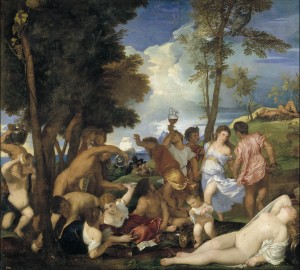
Titian, The Bacchanal of the Andrians, oil on canvas, 1523-1526 (Muso Nacional de Prado) According to Thomas Campbell’s professor, today, using the word “orgy” to describe this scene helps contemporary minds “mak[e] a lost world relevant.”
So if I didn’t have to follow that model, I kept plumbing the depths of the TED web site for more inspiration and insight. I decided I should watch some TEDs given by individuals in my own field—history, material culture, and museums—for inspiration. It turns out there isn’t much out there. (Can we fix that?
Actually, it seems that the Met is staging its own TED event.) So I started with Metropolitan Museum of Art director Thomas P. Campbell’s talk
“Weaving Narratives in Museum Galleries.”To be honest, I just watched highlights to get the gist of it all. And I began to realize that everyone goes about this quite differently (reinforcing my epiphany about storytelling).
It was time to start working on the talk.
The one unifying theme I found with each good TED is that the speakers pontificate from the heart. Campbell really got me excited about tapestries and how museum-goers can have meaningful experiences with them. In short, he echoed my enthusiasm for what he described as “making a lost world relevant” for the public. I laughed out loud when he recounted his interaction with an art history professor who chastised Campbell for using the word “bacchanal” instead of the more down-to-earth “orgy” when it came to classifying the scene depicted in The Bacchanal of the Andrians by Titian. (Let’s stay jargon-free, here, folks!)
The good TED speakers exuded genuine passion for their subjects, and listeners benefitted from learning about the subject matter but also from being in the same room with an enthusiastic expert. (Enthusiasm energizes me, even when I don’t agree with what is being said.)
But how could I replicate this in a mini-TED? How could I impart a complete informative story as well as enthusiasm in just five minutes? I decided that my sparkle would be derived, in part, by my committing my mini-TED to memory. Now, I don’t mean rote memory, but rather I chose my images carefully so that they would prompt me to tell a story that would captivate my audience’s interest from the start to the end. And I practiced…a lot…something that had been drilled into me as a teenager pursuing music and theater. Being moderately impatient and most definitely perfectionist, I always wanted the sparkle to come NOW. Not much has changed, so this took some time. I achieved it by talking to myself a lot during evenings leading up to the mini-TED.
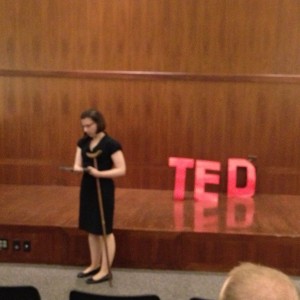
Here I am with a nineteenth-century crutch from my personal collection, about to start my mini Ted talk at the Delaware Public Humanities Institute. I even took the time to create my own “TED” sign.
I had the meat of the talk down pretty early. I knew I would be featuring one of the individuals with a disability (and his stuff) whom I plan to include in my dissertation, but I struggled most with how to grab my audience’s attention from the start. My initial impulse was to walk into the auditorium on crutches. As one of my DelPHI instructors noted, “we’ve all been there, right?” Most definitely. But I thought that perhaps such a move might offend (for lack of a better word) some audiences, particularly since I am not an individual with a physical mobility (or any other) impairment. So I decided to play it safe and use, instead, a nineteenth-century crutch from my own collection as a prop. My hope was that this evocative object would get my audience to conjure up their own past experiences with or observations of people with physical mobility impairment and crutch use.
And then, I launched into my guy’s eighteenth-century story. But really, it was my story about how I came to identify him as a viable research avenue, why objects proved critical in interpreting his story, and how these objects changed the way his contemporaries thought about him and how we think about disability today. My research path, not really the research itself, provided the fuel for the enthusiasm I think I successfully conveyed in the course of the mini-TED. I realized that my talk followed the storytelling trajectory (likely familiar to many) we learned about from documentary filmmaker Michael Oats: familiarity, comfort; a challenge; a resolution. This personal research trajectory angle worked with my audience of peers, and I think it would work for the general public as well. Why not impart our knowledge of history through the demystification of what researching history involves? Perhaps this is one way historians and other public humanists can convey why the humanities matter. (There’s been a lot of debate about how to do this best in recent months.)
And so what did I take away from this experience? Was it worth it to spend all that time throwing a crutch around my apartment for a few nights, trying to find the sweet spot of my enthusiasm for my research? The process reinforced what I knew already—that good research takes time, that I love my research and sharing it with others, and that it takes time to craft a unique presentation for each unique audience. I owe it to myself, I owe it to my audience, and I owe it to the humanities.
Thanks, Ted!
About the author: When she is not antiquing, hanging out in a museum, or teaching, Nicole Belolan is studying material culture and disability in early America.This year, she is working as a graduate assistant for the Museum Studies Program’s Sustaining Places initiative. Read more about Nicole’s work at her web site, http://www.nicolebelolan.org, and follow her on Twitter @nicolebelolan.

